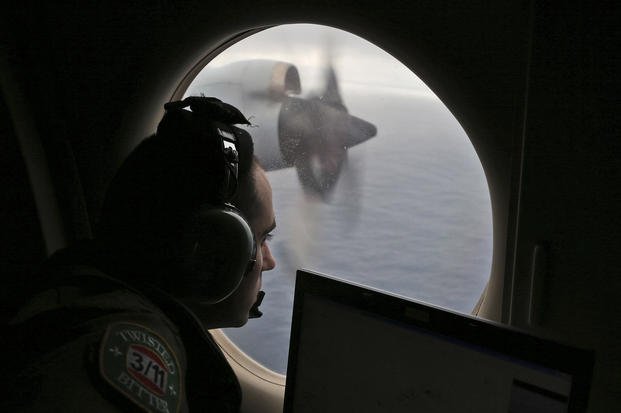KUALA LUMPUR, Malaysia — A decade ago on March 8, a Malaysia Airlines flight vanished without a trace, becoming one of aviation’s biggest mysteries.
Investigators still do not know exactly what happened to the plane and its 239 passengers. But Malaysia’s government said Sunday it may renew the hunt for MH370 after an American marine robotics company that tried to find the plane in 2018 proposed a fresh search.
A massive multinational search in the southern Indian Ocean, where the jet is believed to have crashed, found nothing. Apart from some small fragments that later washed ashore, no bodies or wreckage have ever been found.
Here’s what we know about the deadly aviation tragedy.
What is known about MH370's disappearance?
The Boeing 777 plane disappeared from air control radar 39 minutes after leaving Kuala Lumpur en route to Beijing on March 8, 2014.
The pilot sent a last radio call to Kuala Lumpur before leaving Malaysia — “Good Night Malaysian Three Seven Zero” — but failed to check in with air traffic controllers in Ho Chi Minh City when the plane crossed into Vietnam’s airspace.
Minutes later, the plane’s transponder — a communication system that transmits the plane’s location to air traffic control — shut down. Military radar saw the plane turn around to travel over the Andaman Sea before it vanished, and satellite data showed it continued to fly for hours, possibly until it ran out of fuel. The plane is believed to have crashed in a remote part of the southern Indian Ocean.
Theories about what happened on board range from hijacking to a loss of oxygen in the cabin to power failure. But there was no distress call, no ransom demand, nor bad weather or evidence of technical failures. Malaysian safety investigators cleared all on board in a 2018 report, but didn't rule out “unlawful interference."
Malaysia's government has said that someone intentionally severed communications with the ground and diverted the plane.
Who was on the plane?
The plane carried 227 passengers, including five young children, as well as 12 crew members. Most of those aboard were from China, but there were also people from other countries, including the United States, Indonesia, France and Russia.
The passengers included two young Iranian men using stolen passports to seek a new life in Europe; a group of Chinese calligraphy artists returning from an exhibition of their work; 20 employees of U.S. tech firm Freescale Semiconductor; a stunt double for actor Jet Li; families with young children; and a Malaysian couple on a long-delayed honeymoon. Many families lost multiple members in the tragedy.
What efforts have been made to find the plane?
Dozens of ships and aircraft from various countries began the search between Malaysia and Vietnam in the South China Sea, before moving to the Andaman Sea and the Indian Ocean.
Australia, alongside Malaysia and China, then led the largest and most expensive underwater search ever undertaken, covering some 120,000 square kilometers (46,000 square miles) of seabed off western Australia, using aircraft, vessels equipped to pick up sonar signals, and robotic submarines.
Search vessels detected ultrasonic signals that might have been from the plane's black box and shipwrecks believed to be 19th century merchant vessels, but never found the plane. In July 2015, a fragment later confirmed to be a flaperon from Flight 370 was found on France’s Reunion Island in the western Indian Ocean, the first hard evidence that MH370 ended its flight in the Indian Ocean. Several more pieces of debris were later found washed ashore on the east coast of Africa. The search was suspended in January 2017.
U.S. marine robotics company Ocean Infinity picked up the search in January 2018 under a “no find, no fee” contract with Malaysia, focusing on an area north of the earlier search identified by a debris drift study. But it ended a few months later without success.
Why is the search so hard?
One reason why such an extensive search fail to turn up clues is that no one knows exactly where to look. The Indian Ocean is the world's third largest, and the search was conducted in a difficult area, where searchers encountered bad weather and average depths of around 4 kilometers (2.5 miles).
It's not common for planes to disappear in the deep sea, but when they do remains can be very hard to locate. Over the past 50 years, dozens of planes have vanished, according to the Aviation Safety Network.
What's next?
Malaysia's government has consistently said it will only resume the hunt if there is credible new evidence. It is now considering an Ocean Infinity proposal for a fresh search with new technology, although it is unclear if the company has new evidence of the plane's location.
Many families who lost people in the disappearance remain steadfast in their quest for answers. They argue the mystery must be resolved, not just for personal closure but also to prevent future disasters.
The disaster has also helped to bolster aviation safety. Starting in 2025, the International Civil Aviation Organization will mandate that jets carry a device that will broadcast their position every minute if they encounter trouble, to allow authorities to locate the plane if a disaster occurs. The devices will be triggered automatically and can't be manually turned off. But the rule applies only to new jets — not the thousands of older planes still in service.












